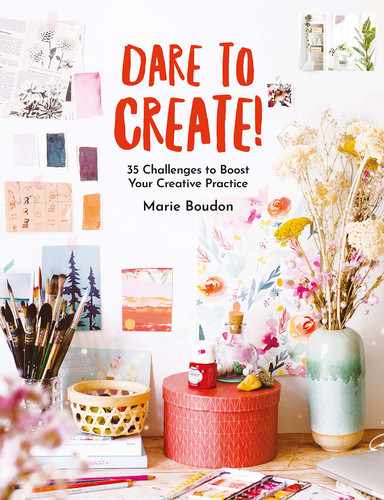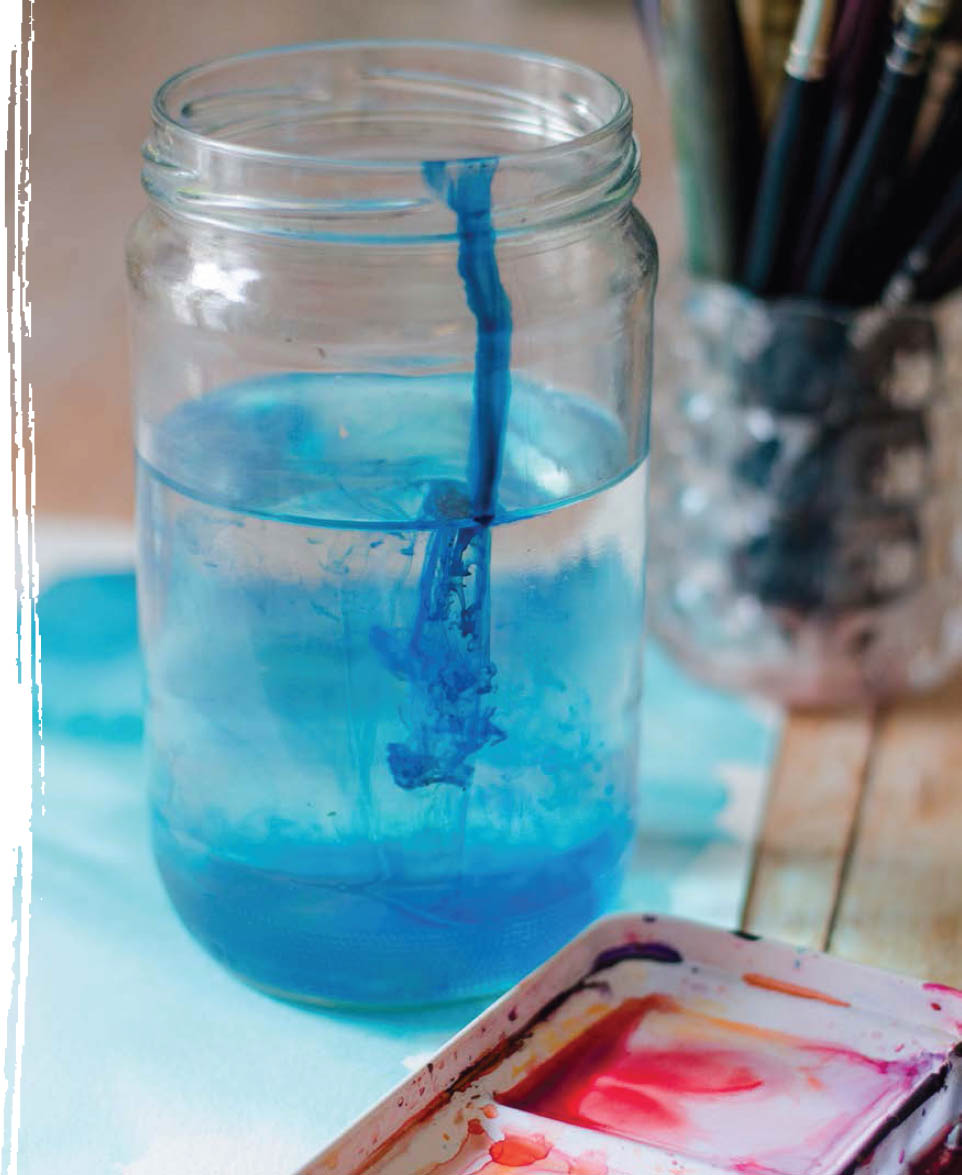 CHALLENGE 26
CHALLENGE 26 
Experimenting
NOW LET IDEAS COME TO YOU BY GOING TO YOUR FEELINGS, YOUR INTUITIONS, AND YOUR SENSES. WITH THIS CHALLENGE AND THE NEXT ONE, IMMERSE YOURSELF IN A MORE COMPLETE EXPERIMENTATION, WITH LESS EXTERNAL GUIDANCE. YOUR PRACTICE CANNOT CONSIST ONLY OF RIGOROUS EXERCISES. EXPERIMENTING FORCES YOU TO DEVELOP A TOLERANCE FOR UNCERTAINTY. BY ACCEPTING THE ABSENCE OF STRUCTURE, YOU WILL CONNECT WITH YOUR DEEPEST SELF, WHICH WILL TAKE YOUR ART TO A WHOLE NEW LEVEL.
Tolerating uncertainty
A creative artist cannot learn all the abilities they need from exercises, nor define themselves simply by their skills, as we saw in challenges 15 and 16. Part of the creative experience has nothing to with technique and involves the realm of feelings instead. This approach is very personal and hard to explain, because it is different for everyone. The following skills belong to the realm of feelings:
![]() following your intuition
following your intuition
![]() accepting chance
accepting chance
![]() putting your imagination to work
putting your imagination to work
![]() acting spontaneously
acting spontaneously
![]() improvising
improvising
![]() embracing the unknown
embracing the unknown
![]() playing
playing
![]() surrendering to your senses
surrendering to your senses
And so on. There is not really any recipe for learning how to follow your intuition or put your imagination to work. And there is no right or wrong way to do it either. To develop these skills, you just have to put yourself into the situation and try it.
If I haven’t talked about experimentation so far in this book, it’s because I think it’s easier to tolerate uncertainty once you have a solid technical foundation. Once you have discovered your medium, feel free to experiment with moments of play (challenge 19). However, don’t expect real results from your experimentations until you feel confident enough to get past technical obstacles and are able to follow your intuition 100 percent.
Following the trail
In an informal conversation with Robin Hilton and Bob Boilen on the podcast All Songs Considered, Paul McCartney explained his method for writing songs based on experimentation: “If I was to sit down and write a song, now, I’d use my usual method: I’d either sit down with a guitar or at the piano and just look for melodies, chords, musical phrases, words, just something to start with. And then I just sit with it to work it out, like I’m writing an essay or doing a crossword puzzle. That’s the system I’ve always used, that John [Lennon] and I started with. I’ve never really found a better system, and that system is just playing the guitar and looking for something that suggests a melody and perhaps some words if you’re lucky.” with a little bit of luck, finding some words. Then I just tinker around that and follow the path, I try things out and I see where they take me. Sometimes it leads to a dead end, and then I have to back up and start over on another path.”
This experimental approach, which involves “following the path,” can be applied to every kind of art. In what follows, we pick out some specific principles for this method.
Preparation:
![]() Don’t resist, don’t control.
Don’t resist, don’t control.
![]() Don’t think about objectives, skills, or goals.
Don’t think about objectives, skills, or goals.
![]() Feel free to create without judgment.
Feel free to create without judgment.
![]() Accept the random results of this practice.
Accept the random results of this practice.
![]() Create an atmosphere (with music, lights) if you need to in order to dive into the experience more easily.
Create an atmosphere (with music, lights) if you need to in order to dive into the experience more easily.
Experimentation:
![]() Set a starting point: your art supplies, a palette, your idea box, or even nothing at all!
Set a starting point: your art supplies, a palette, your idea box, or even nothing at all!
![]() Explore without trying to visualize the result from the beginning. Just develop marks, volumes, movements, or sounds by following your intuition, your feeling, and your curiosity. Push your development without trying to correct yourself. Be present and responsive to what is happening.
Explore without trying to visualize the result from the beginning. Just develop marks, volumes, movements, or sounds by following your intuition, your feeling, and your curiosity. Push your development without trying to correct yourself. Be present and responsive to what is happening.
![]() Do you see an interesting element emerging? Follow that trail and continue to explore the element, improve it, and rework it.
Do you see an interesting element emerging? Follow that trail and continue to explore the element, improve it, and rework it.
![]() If you feel blocked or if your experimentation doesn’t go anywhere, back up and start over with a new experimentation in order to find a new path to work on.
If you feel blocked or if your experimentation doesn’t go anywhere, back up and start over with a new experimentation in order to find a new path to work on.
![]() Add and develop all of these paths together as you go along in order to end up with a finished creation.
Add and develop all of these paths together as you go along in order to end up with a finished creation.
![]() Your Turn
Your Turn ![]()
Prepare yourself to tolerate uncertainty by trying out a session of experimentation where you “follow the path,” using the suggestions in this challenge.
- 1. Start by mentally preparing for the exercise.
- 2. Explore a first path. If it inspires you, continue to develop it; otherwise, start the exploration process over again.


